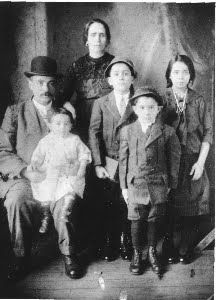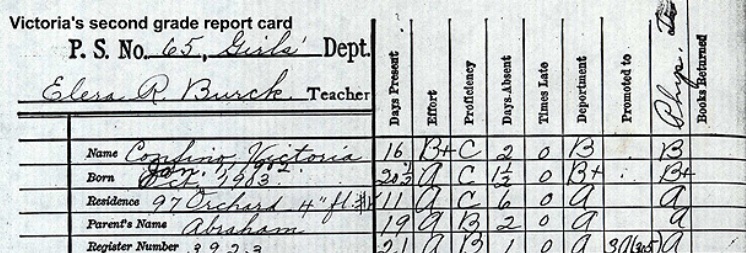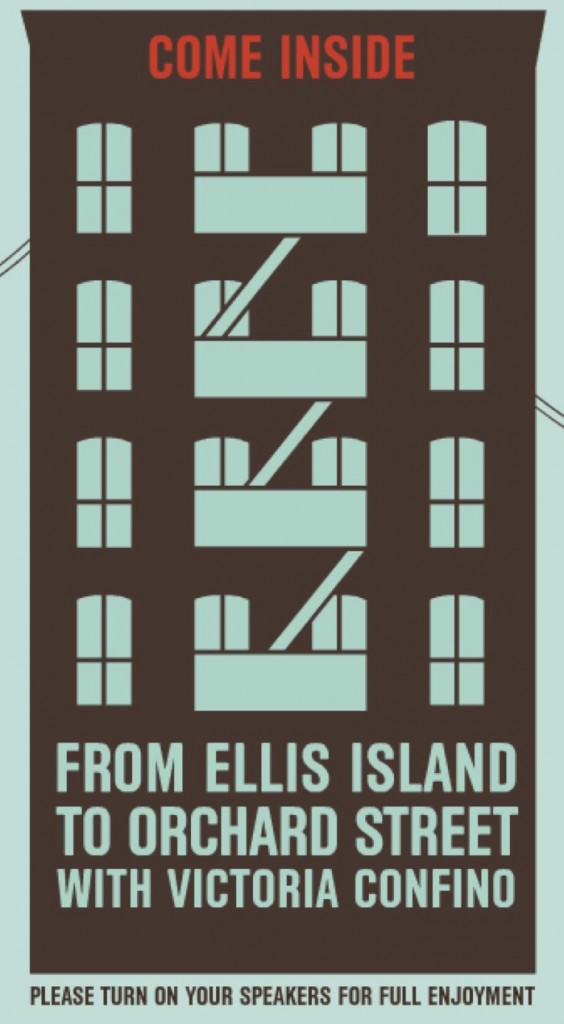#62 Jewish New York – Lower East Side Jews (1800’s)
#62 Jewish New York – Lower East Side Jews (1800’s)
 The Lower East Side of Manhattan is a neighborhood that has embodied the hopes and struggles of generations of newcomers to America. Since the mid-19th century, Manhattan’s Lower East Side has been a magnet drawing people from all around the globe.
The Lower East Side of Manhattan is a neighborhood that has embodied the hopes and struggles of generations of newcomers to America. Since the mid-19th century, Manhattan’s Lower East Side has been a magnet drawing people from all around the globe.
It is the place where hundreds of thousands of immigrants have taken their first steps on the road to the American dream. It is a section of the city that was once home to Africans freed from slavery, followed by Irish, German, Southern Italian, Eastern European and Sephardic Jewish immigrants fleeing from starvation, political turmoil, oppression and economic deprivation.
In this lesson, you will learn about the Jewish experience on the Lower East Side in the 1800’s.
#1 WATCH: New York City’s Lower East Side
#2 STUDY:
 In 1880, in a Jewish population of approximately 250,000, only one out of six American Jews was of’ East European extraction; 40 years later, in a community which had reached four million, five out of six American Jews came from Eastern Europe. Indeed, at that time over a third of East European Jewry had left their countries of origin, and 90 percent of them emigrated to the United States and many got their start on the Lower East Side.
In 1880, in a Jewish population of approximately 250,000, only one out of six American Jews was of’ East European extraction; 40 years later, in a community which had reached four million, five out of six American Jews came from Eastern Europe. Indeed, at that time over a third of East European Jewry had left their countries of origin, and 90 percent of them emigrated to the United States and many got their start on the Lower East Side.
Many of the Jews that lived on the Lower East Side in the 1800’s spoke Yiddish and lived in very simple tenement housing (up to 9 people in one room). They were often poor and peddled goods and services hoping to eek out a living as fruit sellers or garment industry workers.
#3 WATCH: Jewish Immigrants on the Lower East Side Parepare for Passover 1930s
#4 STUDY: Meet Victoria Confino

Young Victoria Confino led a comfortable life in the Ottoman city of Kastoria. She lived in a large house surrounded by fruit trees. Her parents, Abraham and Rachel, ran a successful grocery store on their estate. Several maids attended to the family’s needs. On warm days Victoria and her siblings stomped grapes for wine in the family’s vineyard.
Victoria’s comfortable life soon gave way to uncertainty. In 1910, Sephardic Jews like the Confinos were granted citizenship by the Ottoman Empire. As Kastoria (now part of Greece) became embroiled in the Balkan Wars, the family’s new status seemed more like a curse than a blessing. As a citizen, 15-year old Joseph Confino was eligible for the draft. If forced to fight in the Balkan Wars, Joseph could neither attend Sabbath services nor keep a kosher diet. The family’s anxiety only grew more pronounced when the army stationed troops in the Confino’s home.
When a mysterious fire leveled the Confino estate, the family finally decided to flee Kastoria. In 1913, the Confinos gathered what was left of their belongings and prepared to start from scratch in America. Abraham and Joseph left first with only $100. A few months later, Rachel made the long journey across the Atlantic with Victoria (10), David (8), Saul (5) and Jacob (2). Victoria may have read about New York in letters from Allegra, her 16-year old sister who had reluctantly married by arrangement and immigrated with her husband to the States in 1913.
Allegra’s letters couldn’t prepare Victoria for the Lower East Side. There were neither trees nor any open spaces. The dirty streets were crowded with pushcarts and people moving in every direction. The Confino family’s new home was a fifth-floor tenement apartment in 97 Orchard Street that offered little comfort or privacy. At night, the six children slept on orange crates covered with mantas, mats woven of goats’ hair. Rachel and Victoria had to quickly learn how to hang their wash from the fire escape and to chase rats out of the apartment with a broom.
Religion also complicated the Confino’s adjustment to life in America. As Sephardim, descendants of Spanish Jews who emigrated to North Africa, the Middle East and North America after being expelled from Spain in 1492, the family’s religious customs and diet differed from the Ashkenazic Jews who dominated the Jewish community on the Lower East Side.
Victoria even spoke a different language than East European Jews. Like other Sephardim, she was fluent in Ladino, a mixture of Spanish and Hebrew. However, life in America demanded that Victoria learn English. For the first time, Victoria went to school with her brothers. Though an enthusiastic student, Victoria was placed in the kindergarten class until her language skills improved.
 However, Victoria didn’t stay in school for long. When she turned 14, Abraham Confino took his daughter out of school to “pull threads” in his undergarment factory. Victoria, who had been so excited to finally attend school, resented the decision, but she couldn’t fight her father.
However, Victoria didn’t stay in school for long. When she turned 14, Abraham Confino took his daughter out of school to “pull threads” in his undergarment factory. Victoria, who had been so excited to finally attend school, resented the decision, but she couldn’t fight her father.
In 1916, the Confinos left 97 Orchard, following other Sephardim uptown to a home in East Harlem. Still, many members of the family assimilated to their new country. As adults, some of the boys took American names more to their liking: Saul became Bob while Salvatore became Charlie. David went a step further and changed his last name to Coffield, a name that all the Confino brothers, save for one, would eventually adopt. In 1921, Victoria Confino became Victoria Cohen when she entered an arranged marriage with another immigrant from Kastoria.
#5 WATCH: A Virtual Journey from Ellis Island to Orchard Street
#6: Visit these Jewish Landmarks on the Lower East Side
- The Educational Alliance Settlement house – 175 East Broadway
- Henry Street Settlement – 263–267 Henry Street and 466 Grand Street
- University Settlement House 184 Eldridge Street
- Katz’s Deli – 205 East Houston Street
- Guss’ Pickles – 87 Orchard Street
- Kossar’s Bialys – 367 Grand Street
- Gertle’s Bake Shop – formerly at 53 Hester Street
- Knickerbocker Village – 10 Monroe Street
- Streit Matzo Co. – 150 Rivington Street
- Yonah Shimmel’s Knish Bakery – 137 East Houston Street
- Russ & Daughters – 179 East Houston Street
- Schapiro’s Kosher Wine – Essex Street Market
Synagogues include:
- Bialystoker Synagogue – 7–11 Willet Street
- Beth Hamedrash Hagadol – 60–64 Norfolk Street
- Eldridge Street Synagogue – 12 Eldridge Street
- Kehila Kedosha Janina – 280 Broome Street
- Angel Orensanz Center – the fourth-oldest synagogue building in the United States.
- Congregation Chasam Sopher
- Meseritz Synagogue
- Stanton Street Synagogue
- Boyaner kloiz at 247 East Broadway, opened in 1928 by the Boyaner Rebbe of New York
# 7 Review and Response
1. From where were the settlers from who lived on the Lower East Side? (name 5)
2. What language did the Jews speak on the streets of the Lower East Side?
3. Describe the life of a Jew living on the Lower East Side in the 1800’s.
4. Who was Victoria Confino?
5. If you lived on the Lower East Side in the 1800’s, what type of work would you like to do?
Need some help? We’re here for you. At any time, if you have any questions, please contact one of our teachers so we can help you. Also, at the end of the session, remember to review your responses in your Tamid Workbook so you can get credit for this lesson. Behatzlacha (Hebrew for good luck)! You can reach Sarah at (646)360-0689 or connect@tamidnyc.org

